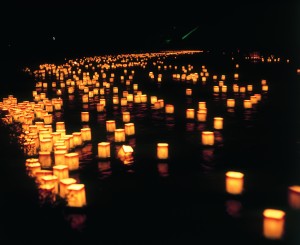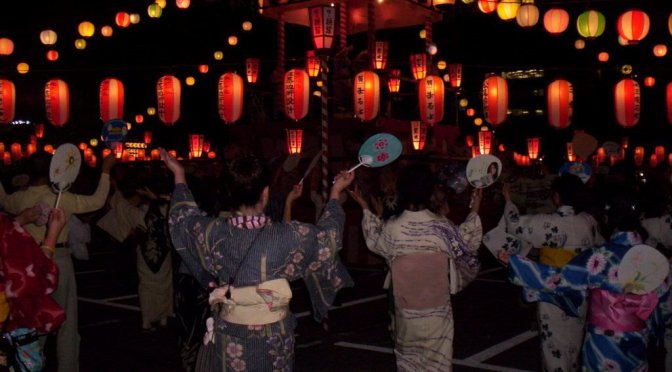Obon, the Festival of Lanterns
Every summer, people of all ages and religious backgrounds come together, often dressed in yukata, light cotton summer kimono, to celebrate being alive and honor those who have passed on, known as Obon.
The Obon festival, also popularly known as the “Festival of Lanterns”, is a 500-year-old tradition rooted in Japanese Buddhism belief that ancestral spirits return to their homes from the world of the dead during this particular time of year to be with their families.
Traditionally, families light lanterns to welcome and show their ancestors the way home as well as place offerings in the form of food, drinks, and flowers at their graves.  The biggest attraction to Obon celebrations, however is the festive and family-friendly atmosphere filled with music, dance, food and good-natured fun. Usually set in the courtyards, lawns, or parking lots of Buddhist temples, families come together to savor some delicious food from the many stalls, play games, and immerse themselves in the lively rhythm of taiko drums. Continue reading Summertime Dancing Obon in Japan
The biggest attraction to Obon celebrations, however is the festive and family-friendly atmosphere filled with music, dance, food and good-natured fun. Usually set in the courtyards, lawns, or parking lots of Buddhist temples, families come together to savor some delicious food from the many stalls, play games, and immerse themselves in the lively rhythm of taiko drums. Continue reading Summertime Dancing Obon in Japan


